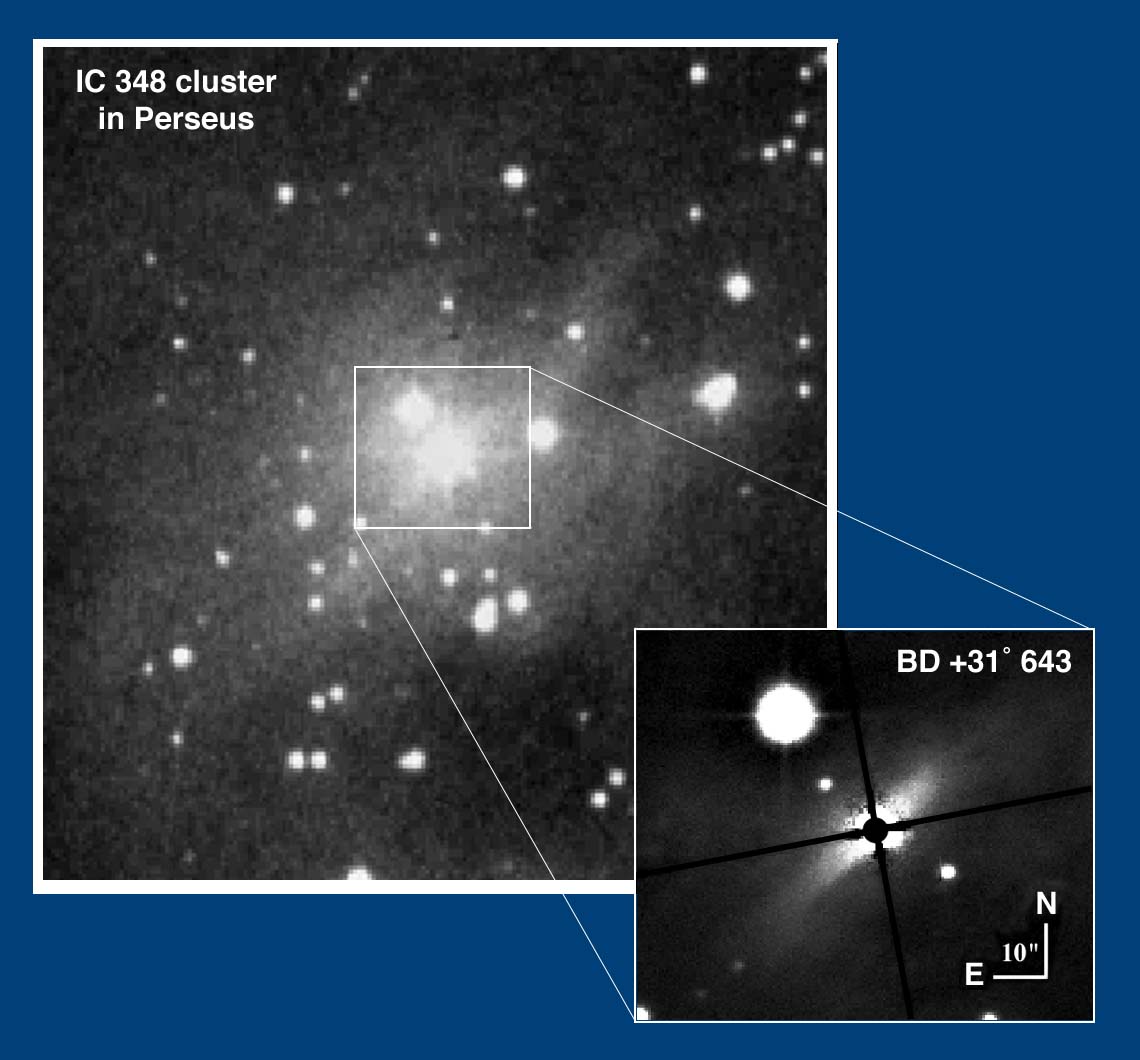
Image Credit: Kalas, P. and Jewitt, D. 1996, "A Candidate Dust Disk Surrounding the Binary Stellar System BD +31 643," Nature, vol. 386, pg. 52

Image Credit: Kalas, P. and Jewitt, D. 1996,
"A Candidate Dust Disk Surrounding the Binary Stellar System BD +31 643,"
Nature, vol. 386, pg. 52
HD 281159
SAO 56680 HIP 17465
RA (2000) = 03 44 34.1865
Dec (2000) = +32 09 46.112
SpT = B5V
V = 8.68 mag d = 330 pc
Proper Motion (mas/yr) =1.12 -9.43
This image traces the scattered light of a disk-like
structure surrounding the binary pair of main sequence
stars designated BD +31 643. Unlike HR 4796, which has
a disk around one star in a binary pair, this disk
surrounds both stars. Each star is a massive B5 main
sequence star with projected separation 200 AU (0.6").
In the image shown here both stars
lie behind the occulting mask.
BD +31 643 is about 330 pc from the Sun. As seen here, the
physical radius of the disk is over 6000 AU, much larger than any other
known disk around a main sequence star. Measurements indicate
that the dust is depleted near the center, forming a hole in
the disk approximately 2300 AU in radius.
The stars seen nearby form part of the IC 348 star cluster
in Perseus. BD +31 643 lies at the center of this cluster,
which is composed of many pre-main sequence stars and is
generally very dusty. The image
below shows a much larger view of the region.
 Radiation pressure should clear the dust around BD +31 643
in about 1000 years. The fact that the dust is still present
around the star argues that a population of larger objects
may have formed that has replenished the dust about a thousand
times over. The wispy nebulosity all around BD +31 643 represents
the parental dust cloud from which the disk and binary formed.
Thus the entire system may represent an intermediate stage of
evolution between embedded protostars and isolated, main-sequence
stars such as beta Pic.
Radiation pressure should clear the dust around BD +31 643
in about 1000 years. The fact that the dust is still present
around the star argues that a population of larger objects
may have formed that has replenished the dust about a thousand
times over. The wispy nebulosity all around BD +31 643 represents
the parental dust cloud from which the disk and binary formed.
Thus the entire system may represent an intermediate stage of
evolution between embedded protostars and isolated, main-sequence
stars such as beta Pic.
Basic facts about BD +31 643:
1) Stellar Mass = 2 x 5 Msun, Dust Mass = 0.000001 Msun
2) Radius of Disk = 6,600 AU (20")
3) Radius of central depletion of dust = 2300 AU
4) Age < 10 Myr
Copyright, please do not reproduce without permission from the authors.